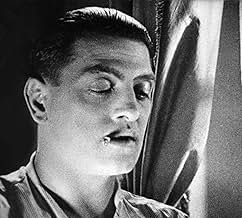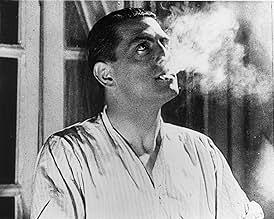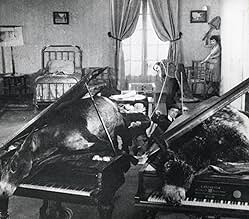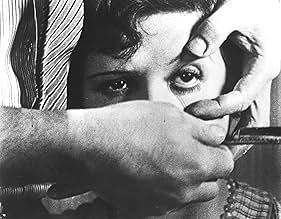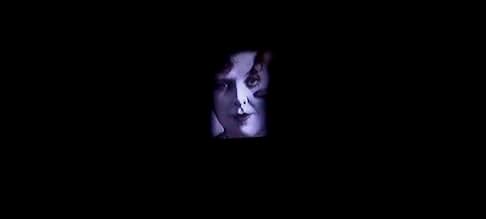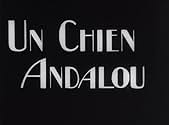Luis Buñuel and Salvador Dalí present 16 minutes of bizarre, surreal imagery.Luis Buñuel and Salvador Dalí present 16 minutes of bizarre, surreal imagery.Luis Buñuel and Salvador Dalí present 16 minutes of bizarre, surreal imagery.
Pierre Batcheff
- Man
- (as Pierre Batchef)
Simone Mareuil
- Young Girl
- (as Simonne Mareuil)
Luis Buñuel
- Man in Prologue
- (uncredited)
Pancho Cossío
- Stroller
- (uncredited)
Salvador Dalí
- Seminarist
- (uncredited)
Juan Esplandiu
- Stroller
- (uncredited)
Robert Hommet
- Young Man
- (uncredited)
Marval
- Seminarist
- (uncredited)
Fano Messan
- Hermaphrodite
- (uncredited)
Jaume Miravitlles
- Fat Seminarist
- (uncredited)
- Director
- Writers
- All cast & crew
- Production, box office & more at IMDbPro
Featured reviews
this movie may be dated in a certain sense, but the vitality and passion of its vicious rebellion against societal taboos and constraints still comes through full throttle. bunuel, master of cinematic/surrealist revolt, violates every boundary he can think of. a woman's eyeball is slashed open, her chest brutally groped, ants crawl out of a man's hand, etc. this is more of a curiosity than anything else, but I am a surrealism fanatic and love this along with Cocteau's "Blood of a Poet". the reviewers here who downplay it's value are simply wrong and probably decided in advance to dislike it to look different.
I saw this recently n i am shocked at the violent content n nudity in a film made in 1929.
Candyman borrowed the scene where insects come out of a palm.
Candyman borrowed the scene where insects come out of a palm.
Luis Buñuel and Salvador Dalí's "Un Chien Andalou" (1929) is not merely a film-it is a visceral assault on logic, a 16-minute plunge into the subconscious that redefined the boundaries of cinema. Emerging from the feverish collaboration of two avant-garde titans, this short film remains a cornerstone of surrealist art, blending dreamlike absurdity with shocking imagery to challenge the very notion of narrative coherence.
The film's structure mirrors the disjointed, irrational flow of a dream, eschewing traditional storytelling for a series of jarring vignettes. From the infamous opening scene-a cloud slicing the moon as a razor slits a woman's eyeball -to ants crawling from a man's palm and rotting donkeys draped over pianos, Buñuel and Dalí weaponize Freudian symbolism to evoke primal fears and desires. The creators famously declared that their only rule was to reject any rational explanation for the film's imagery, insisting that interpretation lies solely in the realm of psychoanalysis. This deliberate ambiguity transforms the viewer into an active participant, forced to confront their own subconscious reactions.
Shot on a shoestring budget over two weeks, the film's technical audacity remains striking. Buñuel's stark black-and-white cinematography and abrupt edits amplify the surreal atmosphere, while the use of a cow's eye for the slicing scene (to avoid harming an actor) underscores the visceral realism of the grotesque.
"Un Chien Andalou" defies categorization. It is neither a story nor a manifesto but a raw, unfiltered excavation of the human psyche. As Buñuel later quipped, "Nothing in the film symbolizes anything" , yet its power lies precisely in this refusal to conform. To watch it is to surrender to chaos-to let the ants crawl, the razors slash, and the donkeys rot. Nearly a century later, it remains a testament to art's ability to unsettle, provoke, and transcend.
A landmark of surrealism, "Un Chien Andalou" is essential viewing for anyone willing to brave its unnerving beauty. Just don't expect answers-only questions, writ large in blood and celluloid.
The film's structure mirrors the disjointed, irrational flow of a dream, eschewing traditional storytelling for a series of jarring vignettes. From the infamous opening scene-a cloud slicing the moon as a razor slits a woman's eyeball -to ants crawling from a man's palm and rotting donkeys draped over pianos, Buñuel and Dalí weaponize Freudian symbolism to evoke primal fears and desires. The creators famously declared that their only rule was to reject any rational explanation for the film's imagery, insisting that interpretation lies solely in the realm of psychoanalysis. This deliberate ambiguity transforms the viewer into an active participant, forced to confront their own subconscious reactions.
Shot on a shoestring budget over two weeks, the film's technical audacity remains striking. Buñuel's stark black-and-white cinematography and abrupt edits amplify the surreal atmosphere, while the use of a cow's eye for the slicing scene (to avoid harming an actor) underscores the visceral realism of the grotesque.
"Un Chien Andalou" defies categorization. It is neither a story nor a manifesto but a raw, unfiltered excavation of the human psyche. As Buñuel later quipped, "Nothing in the film symbolizes anything" , yet its power lies precisely in this refusal to conform. To watch it is to surrender to chaos-to let the ants crawl, the razors slash, and the donkeys rot. Nearly a century later, it remains a testament to art's ability to unsettle, provoke, and transcend.
A landmark of surrealism, "Un Chien Andalou" is essential viewing for anyone willing to brave its unnerving beauty. Just don't expect answers-only questions, writ large in blood and celluloid.
I still remember my visit to Philadelphia Museum of Art, back in the April of 2005. One of the reasons I went there was to to see the Salvador Dali's exhibitions but the tickets were sold out. While in the museum, I was able to see two films that Dali was a big part of. In the video Gallery of the museum, two intriguing projects have been running together in the continuous loop, the early "Un Chien Andalou" (17 minutes) and the recently released, animated Destino (6 minutes). This was the first viewing for me. I kept coming back to the gallery few more times and I never was tired of both short films.
The inspiration for "Un Chien Andalou" began with the dreams of two young rebellious men, the artists and the friends, Luis Bunuel and Salvador Dali. They exchanged the dreams they both had, Bunuel - about a slender cloud slicing the moon in half "like a razor blade slicing through an eye", and Dali - about a dream involving a hand enveloped by ants. Both artists soon began working on a film script based on these ideas.
Made in 1929, the film has not aged at all. Its disconnected but haunting scenes and images are as shocking today (at least, for me they were) as I am sure they were all these years ago for the viewers who faced them for the first time. The reason the film is so powerful even now may be the themes of love, sex, death, and decay that are eternal and will always attract the artists and audiences alike. It is also could be in the establishing and following by both artists the certain rules, "No idea or image that might lend itself to a rational explanation of any kind will be accepted...We had to open all doors to the irrational and keep only those images that surprised us without trying to explain why." Perhaps, Dali and Bunuel intended their film to be experienced directly, on the visceral level, and not analyzed by the viewers.
The inspiration for "Un Chien Andalou" began with the dreams of two young rebellious men, the artists and the friends, Luis Bunuel and Salvador Dali. They exchanged the dreams they both had, Bunuel - about a slender cloud slicing the moon in half "like a razor blade slicing through an eye", and Dali - about a dream involving a hand enveloped by ants. Both artists soon began working on a film script based on these ideas.
Made in 1929, the film has not aged at all. Its disconnected but haunting scenes and images are as shocking today (at least, for me they were) as I am sure they were all these years ago for the viewers who faced them for the first time. The reason the film is so powerful even now may be the themes of love, sex, death, and decay that are eternal and will always attract the artists and audiences alike. It is also could be in the establishing and following by both artists the certain rules, "No idea or image that might lend itself to a rational explanation of any kind will be accepted...We had to open all doors to the irrational and keep only those images that surprised us without trying to explain why." Perhaps, Dali and Bunuel intended their film to be experienced directly, on the visceral level, and not analyzed by the viewers.
I find it hilarious that so many people who have posted here are even attempting to place any meaning whatsoever into this film's imagery! The only point to be made in this movie is that there should be no point to be made. Any significance placed onto anything contained in this film is a complete fabrication of the narrow-minded viewer who believes movies are only made to carry some message. That is the genius of Bunuel and Dali. They were surrealists. The point of surrealism is that there is no point, no meaning whatsoever.
Personally, you all may dissect (pun intended) and pore over this great film if you please, but you are fools in the eyes of the (deceased) filmmakers for doing so.
Personally, you all may dissect (pun intended) and pore over this great film if you please, but you are fools in the eyes of the (deceased) filmmakers for doing so.
Storyline
Did you know
- TriviaAt the Paris premiere, Luis Buñuel hid behind the screen with stones in his pockets for fear of being attacked by the confused audience. Nothing of the sort happened. In fact, the audience loved its mysterious and incomprehensible plot.
- Alternate versionsThe film was re-released in 1960 with soundtracks.
- ConnectionsEdited into Avant Garde Cinema (1960)
Details
- Release date
- Country of origin
- Language
- Also known as
- Un Chien Andalou
- Filming locations
- See more company credits at IMDbPro
- Runtime16 minutes
- Color
- Sound mix
- Aspect ratio
- 1.33 : 1
Contribute to this page
Suggest an edit or add missing content



